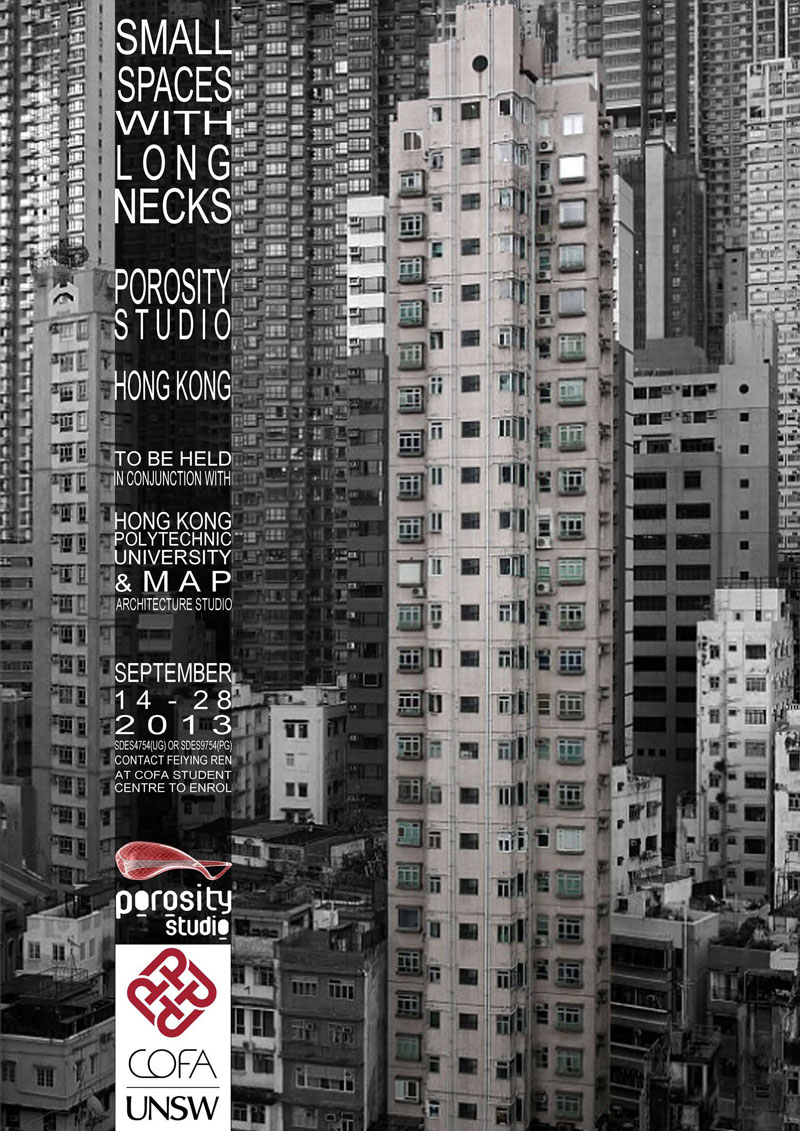P O R O S I T Y S T U D I O 2 0 1 3
“S M A L L S P A C E S W I T H L O N G N E C K S”
a multi-disciplinary COFA studio elective
and/or part of ongoing study and practice
to be held in conjunction with
HONG KONG POLITECHNIC UNIVERSITY AND MAP
Introduction
Professor Richard Goodwin has been using multi-disciplinary international studios as a way of teaching since 2004 when he conducted the first such studio at Tsinghua University. To date these studios have visited Milan, Cardiff, Edinburgh, Glasgow, Rotterdam, Beijing and Shanghai. This project represents the 11 studio in a remarkable series. Each studio involved up to 60 students, 30 from each country, and lasted for 2 weeks.
Associate Professor Paul Thomas participates in his first Porosity Studio, his transdisciplinary practice and engagement in teaching experimental arts will add to studios breadth.
Rationale
The Porosity Studio is offering a 2 week studio this year in Hong Kong between the 16th – 27th September 2013.
The title of the studio and its architectural scale of focus are only intended to provoke a response and to direct you as practitioners to challenge your individual practices and disciplines at the scale of the city.
The final outcomes of your work, and design intent, are your choice. Collaboration with other students and disciplines is also encouraged but optional.
High-density housing and high-rise living need focus, art and design, which bring a broad spectrum of solutions and ideas to their problems.
Density and compact living are always important issues in Hong Kong. The footprint of the “Pencil Tower” typology of buildings in Hong Kong is very peculiar as it responds to the lack of land as well as the verticalisation of the housing.
How can we radically transform “small spaces with long necks”? How might this line of enquiry lead you to new designs and artworks about this city?
The urban component of this studio will address high-rise housing and social issues in Hong Kong via design, performance, public art, and film or other media, by defining the condition of the communal service for the towers, their hallways and surrounding spaces.
Equally it might act a catalyst for other strategies about cities.
Either way this provocation is the starting point of a studio, which will culminate in an exhibition in Hong Kong and a catalogue to be printed in 2014.

